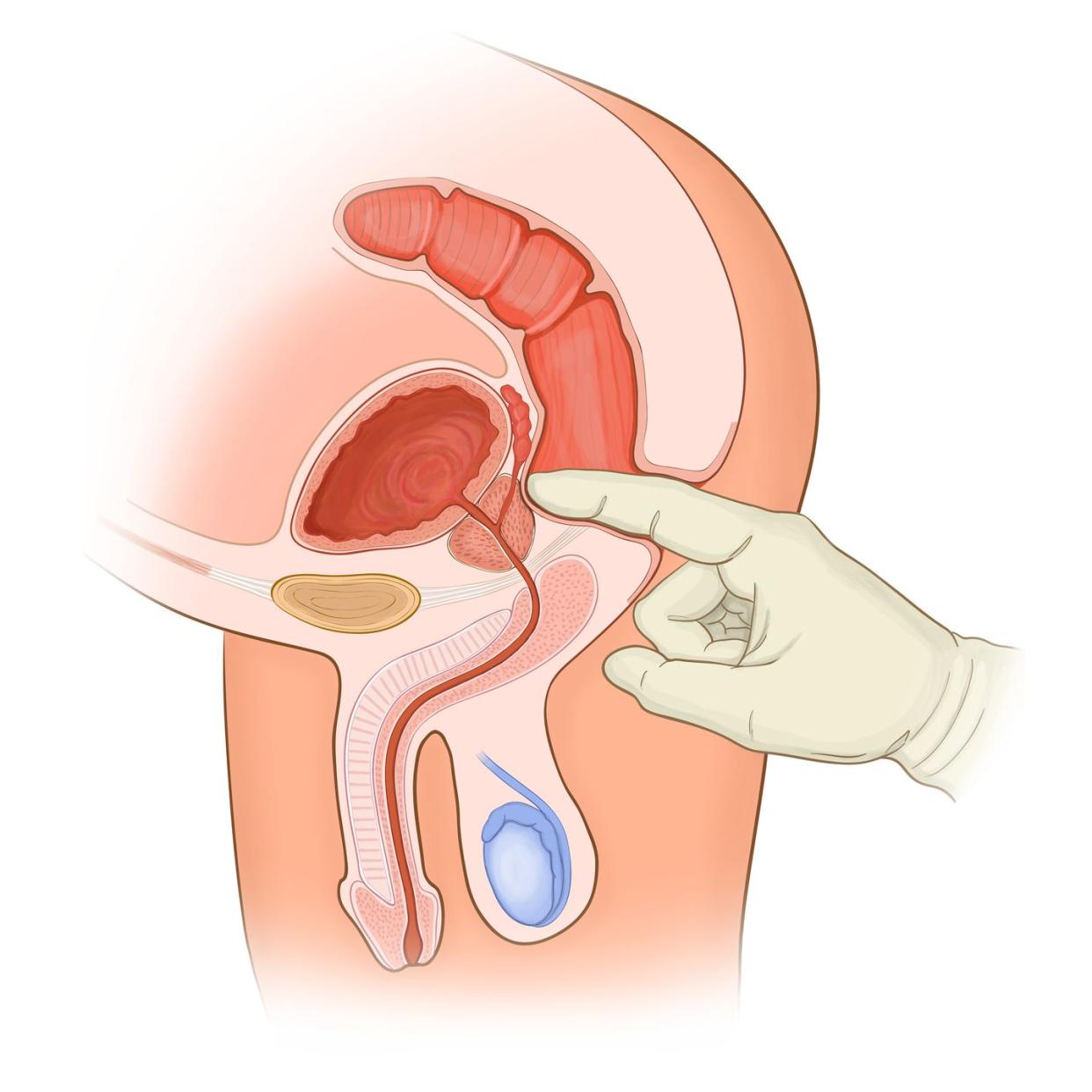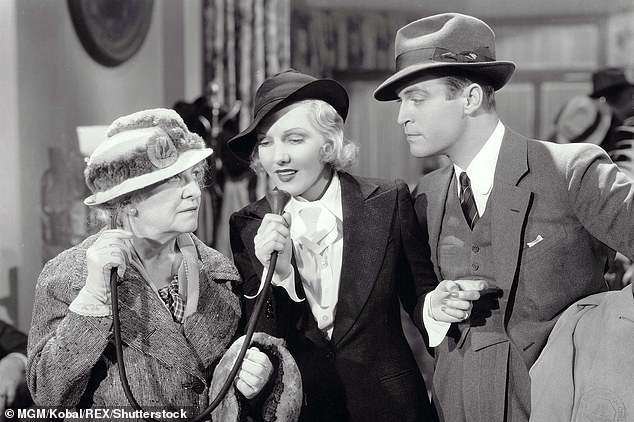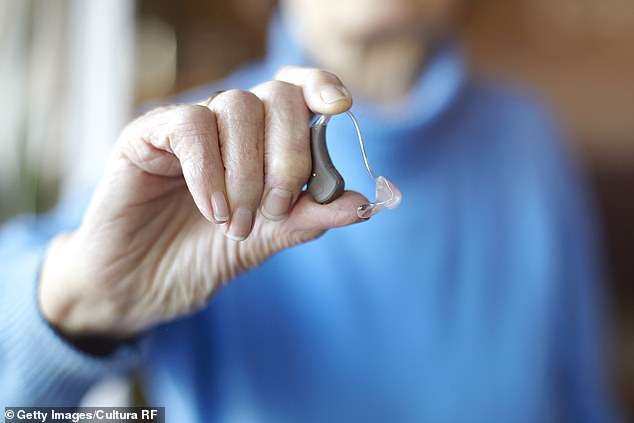SMART SEARCH
The Male G Spot Is Real—and It's the Secret to an Unbelievable Orgasm
















The Male G Spot Is Real—and It's the Secret to an Unbelievable Orgasm
FOR SOME CISGENDER MEN, the idea of someone touching their prostate sounds about as appealing as getting a root canal. But if you can open your mind to the world of anal exploration, you might find that stimulating the prostate can bring new heights of sexual excitement and pleasure.
The prostate has been dubbed the male G-spot (or P-spot) because of its ability to deliver incredible, full-body orgasms. That's because the prostate contains a ton of nerve endings; in fact, there are almost as many nerve endings in the prostate as there are in the clitoris. "It really can open up a whole new avenue of pleasure for men if they are willing to try it," says Susan Milstein, Ph.D., a sex educator and professor in the Department of Health Enhancement, Exercise Science and Physical Education at the Rockville Campus of Montgomery College in Maryland.
FYI, your sexual orientation has absolutely no bearing on whether prostate play is right for you. "Guys have to remember this: The sensations and experiences that feel good have nothing to do with your sexual orientation or gender," Alicia Sinclair, founder and CEO of b-Vibe, a line of innovative vibrating anal toys known for its rimming and weighted butt plugs, says in Men's Health Best. Sex. Ever. "There’s nothing inherently feminine about receiving anal stimulation and penetration. You get to decide what anal play means to you and how you feel about it. And when you can let go of the idea that a sexual act has to be done by a specific gender, you’ll discover some amazing opportunities."
Sales of prostate massagers have been on the rise in recent years. According to 2017 data from the pleasure product company HealthyAndActive, prostate massager sales had increased by 56% in the five years prior, particularly among straight men over the age of 45.
Men can even have prostate orgasms without stimulation to the penis. "The orgasm from your prostate is a full body orgasm, and you feel a tingly sensation all over," says Chris* (last name has been withheld for privacy reasons), a sex educator at The Pleasure Chest in Los Angeles. "This is opposed to the more isolated and direct pleasure from a regular orgasm through masturbation or penetration. In general, a prostate orgasm requires more time to warm up and more energy. But it's totally worth it." See: what 10 people had to say about the differences between prostate and penile orgasms.
What is the prostate—and where is it?
The prostate is a walnut-sized gland below the bladder, above the penis, and in front of the rectum. Its primary function is to create prostate fluid, which is a component of semen. But prostate stimulation can be so pleasurable that some sexual health experts have dubbed the prostate the "male G-spot."
To reach it, you or a partner can insert a finger or toy about two inches into your rectum, hooking it toward your belly button (as opposed to your back). Here's a diagram of how to reach it:

Different people enjoy different types of prostate stimulation, including circular motions and in-and-out penetration. You can try a variety of techniques to see what feels best for you.
You can also stimulate the male G-spot without penetration, by applying pressured massage to the perineum—the patch of skin between the scrotum and the anus.
The P-spot really is a holy grail of male-bodied pleasure.
How to Stimulate the Male G-Spot
If you’ve been sleeping on the P-spot, it’s time to get up. We’ve gathered all the expert tips you need for stimulating the prostate, including the best positions for hitting it.
1) Be prepared.
If you're trying prostate massage by yourself, make sure your hands are clean and your nails are clipped short. (If you're trying it with a partner, check their digits for any hangnails.) Perhaps most importantly, "always use lube, as the anus does not self lubricate. If putting something in your rectum hurts, slow down and add more lube," says Chris. He recommends a syringe-like applicator called a lube shooter if you're uncomfortable applying lube with your fingers.
2) What about poop?
There’s always one big question newbies have when it comes to anal exploration: What about poop? Valid question! After all, expelling feces is the primary purpose of the anus and rectum.
But here’s a little anatomy lesson: The rectum does not store feces. Feces transfers from the intestines and is pushed out through your rectum and then anus. This is important to remember, because a lot of folks have this idea that your poop is just sitting right inside your butthole. Untrue! You’re not going to “hit” a piece of poop if you start poking around up there.
That said, you may still feel more comfortable doing a quick wash beforehand. “Anal preparation is very personal, and folks have different opinions on it,” Sinclair says. There are two main ways you can clean out your rear end: douching using a little bulb, where you squeeze clean water into your behind, and using a hose that you can connect to your shower head and insert into your butt (often referred to as a shower enema).
3) Take baby steps, staring with the perineum.
Before going in, start with a gentle external massage on your perineum (also known as your grundle or taint), which is located between the testicles and anus. The perineum is a highly sensitive yet often overlooked erogenous zone.
"Take some time on your own to get to know your body. Lay on your back with your butt under a pillow, tilting your hips up for easy access. Start with massaging your perineum with your hand or fingers. Apply lube to your finger and rub your anus externally to stimulate the nerve endings," says Chris.
4) Explore internal stimulation.
If the external massage feels good, curve your (at this point, lubed-up) finger into your rectum towards your belly button. "Two or so inches in, you should be able to feel your prostate," says Chris.
It's important to note that you really don't have to go much further than that, particularly on your first try. "People think you need to shove a whole hand up there, but that's not how it works," Milstein says. "Insert one finger a few inches into your anus and push up toward the rear. Wiggle it around a bit, tap the inner walls, and apply different amounts of pressure to see what feels good to you."
If you’re worried about getting “messy,” so to speak, then go ahead and try it in the shower. Still, you’ll want to use plenty of lube. "Silicone lube is one of the best lubes for anal because it contains dimethicone, dimethiconol, and cyclomethicone," Alicia Sinclair, founder of the sex toy brand b-Vibe, previously told Men’s Health. "This creates a consistency that is thicker and more 'buttery' than water-based lubes. Most people find that they prefer a thicker lubricant for anal play because it gives some extra cushion to protect delicate body parts."
The additional thickness means you won’t have to reapply it constantly, the way you’ll likely have to with a water-based lube.
5) Make sure you're turned on!
It’s not going to be comfortable if you attempt prostate stimulation without being turned on. When you’re turned on, your body will work with you, as opposed to against you. You’ll be more relaxed or “looser” and less likely to clench. That’s why it’s good to pull up your favorite porn site, and maybe even masturbate regularly a little before you go ahead and stick a finger up your behind.
6) Remember you can stop whenever you want.
Just like how you walk before you run, you insert fingers before inserting anything else of substantial size up your or your partner’s bum. Slow and steady wins the race here. There is absolutely no reason to rush, and it’s not a competition, either. Take only what you can take. This isn’t a “push through the pain” situation. This is an “if it hurts, stop, slow down, and go back to something tinier” situation.
7) Breathe.
“Breathing is foundational for anal, prostate, and pelvic floor play,” explains Dr. Uchenna “UC” Ossai, Pelvic PT, certified sexuality counselor and founder of YouSeeLogic.
If you hold your breath the entire time, a few things can happen, Dr. UC warns. First, your body is tricked into the "fight or flight" response. “Basically, it thinks you are being chased by a bear, and that is not the physiological response you want to have during anal play,” she says. You don’t want to clench your anus when your prostate is being stimulated; you want it relaxed so you can easily “take” what’s being inserted inside of you.
“Second, your muscles hold way more tension when you hold your breath, which isn't the goal because you want your pelvic floor to move with ease,” Dr. UC says.
Thus, she recommends experimenting with your breath. “Start with slow and intentional diaphragmatic breathing (inhale as you allow your belly and pelvic floor to expand while keeping your chest still; then exhale and everything returns back to baseline),” she says. Take three seconds to inhale and three seconds to exhale. Do this on your side, back, hands and knees, and reclined. “If you pay attention, you will notice your pelvic floor behave in different ways with your breath,” she says.
8) Try a prostate massager.
Before exploring prostate massagers, you might want to start with a butt plug to get used to the ideas, such as the Nu Sensuelle Remote Control 15-function Vibrating Mini Butt Plug. Proper prostate massagers are designed differently in order to reach the male G-spot—the prostate.
"You always want to buy one with a tail or a wide base that it doesn't get lost up there. You don't want to end up in the 'Butt Bin' at the ER where they keep objects found in people's rectums," jokes Milstein. That said, if you're interested, here are 5 surprisingly common penis injuries that can land you in the ER. (Note: When you’re using a toy, it’s necessary to use water-based lubes, otherwise you can permanently damage or destroy the toy.)
9) Have a partner help you.
Unless you’re extremely flexible, it can be little bit awkward stimulating yourself. It’s by no means impossible, but it can be tough to relax while you're bent like a pretzel. That’s why it’s a good idea to have your partner help you out. When someone else is doing the work for you, you can focus on your breathing, the sensation, and everything else happening to your body.
The Best Sex Positions for Prostate Stimulation
If you're trying prostate massage with a partner, these sex positions will optimize their access to your P-spot. Don't forget to use plenty of lube!
Doggy style
Doggy style might be one of the most straightforward ways to reach the prostate, based entirely on the access you have to the anus. The receiver is on all fours. The giver then penetrates the receiver from behind. The receiver should angle their hand/toy down towards the belly button. This position can offer up a fun play on power dynamics, which can be especially hot.
On your back
In this position, the receiver lies on their back, legs butterflied open. The giver then penetrates the receiver using their hand or a prostate toy. (If you’re a beginner, we recommend using one finger to start.) The giver should then hook up towards the belly button. The giver should be able to feel a ridged gland that feels a bit rough in texture. That’s the P-spot! You can either move the hand in and out, or massage the prostate in circles.
Facedown
The receiver lies on their stomach with their legs open on the bed. The giver then enters their partner from behind with their fingers or a toy. This position allows for shallow penetration, but may make it easier to relax the anus before. You can also skip penetration entirely and simply massage the prostate through the perineum by placing a palm with firm pressure. Not to mention this is kind of the ultimate lazy person position, which can be very appealing.
On your side
The receiver lies on their side, with one or both knees drawn to the chest. The giver lies behind them, in a semi-spooning position, leaving room for their hands or a toy. Having your knees drawn up actually reduces sensations to the penis, which can help the receiver focus on the sensations in their prostate. This position is also quite relaxing, which makes it ideal for anal penetration. The receiver can add a pillow between their legs for extra support and comfort.
Vaginal Care - From Pubes to Lubes: 8 Ways to Keep Your Vagina Happy















Everyone seems to be talking about vaginas these days, from celebrities and gossip columnists to writers and grammar lovers and everyone in between. It’s becoming more difficult to sift through the dos and don’ts of having a vagina. As a sex educator, one thing I’m a stickler for is language. You’d be surprised how many people — of any gender — use the terms “vulva” and “vagina” interchangeably. They’re two very different things and it pays to know the difference.
So before we go into habits, let’s get a few facts straight.
What’s a vagina?
A vagina is also known as the birth canal for those who bear children. The vagina connects with the cervix and, through that, the uterus.
The ovaries, located on either side of the uterus, release eggs in fertile people. These eggs travel down the fallopian tubes to the uterus, where, in conception, they meet up with sperm for fertilization and implant along the uterine wall.
When fertilization doesn’t happen, menstruation does. Until the egg is released, the uterus builds up extra lining to provide the most hospitable environment possible for a fertilized egg. When an egg isn’t fertilized, though, this lining has to go somewhere. So it exits the body during your period until menopause or any number of factors affect menstruation.
What’s a vulva?
The vulva is the outside portion of the female genitals — the part you can see. It consists of the mons pubis, clitoris, urethra, labia majora, and labia minora. The labia majora is the outer fold of the genitals, while the labia minora is the inner fold. These parts help protect the clitoris, which is extremely sensitive — even more so than the head of a penis. And like the head of a penis, the clitoris can be a major pleasure center! In fact, many people with vaginas need clitoral stimulation to orgasm.
Now that we’ve sorted out the fun facts of anatomy, let’s explore some habits for vagina health. Here are eight things to keep in mind if you are the proud owner of a vagina.
I hate to break it to you because you may enjoy smelling “summery fresh,” but douching is actually harmful to the vagina. So, how do you keep it clean?
Luckily, vaginas are amazing organs. Not only do they help bring life into this world (as if that wasn’t enough), but they also do a great job keeping themselves clean. They do this by balancing healthy bacteria and pH levels on their own. No douching needed.
Douching actually eliminates some of that healthy bacteria, which changes the pH and makes you more susceptible to infections.
But what about smelling summery fresh, you ask? Each person’s genitals smell different and there are natural ways to affect your personal scent, including changing up what you eat. Things like pineapple can make vaginas taste or smell sweeter, while asparagus can have the opposite effect.
Try this: If you still want to clean your vagina and vulva, make sure to use non-scented products and only wash the labia majora. Rebalance Personal Moisturizing & Cleansing Wipes by Good Clean Love are a great way to remove excess sweat or feel a little cleaner without affecting the natural pH of your vagina. They also have a moisturizing wash that is great for those personal places.
2. Keep the Pubes
It’s okay to do a bit of trimming or removing hair along your swimsuit line. No one says it needs to be unruly — although you should rock it however you want! — but please, do keep your pubic hair.
Pubic hair serves many purposes. It protects your downstairs from extra bacteria, and it also eliminates issues related to friction and sweating. Less hair removal also means less itch as the hair grows back, fewer cuts and scrapes, and fewer ingrown hairs.
Try this: If you must shave or landscape your pubic hair, try to use natural shaving gels and creams. Sliquid has a great line of hypoallergenic and vegan shaving creams that are fantastic for trimming up down there.
Lubrication is amazing. It can take sex to the next level for everyone involved. Still, there are some ingredients that aren’t very healthy for your body.
Glycerin, for one, is related to sugar. While it works great to keep lubes moist, it can also contribute to bacteria growth in the vagina. Petroleum products are also no-nos because they can ruin the vagina’s natural pH level. Other things you may want to avoid include:
- parabens
- scents
- flavors
- nonnatural oils
- dyes
Try this: Uberlube is a fantastic personal lubricant that can be used for massage as well. It’s made of silicone and maintains a great silky and smooth feel throughout play. You might also like Good Clean Love’s Almost Naked lubricant, which is organic, vegan, and free of parabens and glycerin. It also smells amazing.
Do you find yourself wondering how the heck some toys work? You’re not alone. And it turns out, not all sex toys are safe for anything but taking up drawer space.
Toys made from certain materials are, generally speaking, safe. These include:
- wood
- silicone
- stainless steel
- glass
- ceramic
- stone
- a type of plastic called ABS
That said, these need to be pure and medical- or even food-grade materials, not blends.
If you want to learn more, I recommend visiting Dangerous Lily for information on body-safe toys, dangerous toys, and more.
Try this: Generally, you want to avoid purchasing sex toys online. It’s hard to find out what these toys are made of and ensure they weren’t, um, previously used. That said, there are a lot of great organizations to buy from.
For example, Vibrant is one of my favorite shops. Not only are their toys all body-safe, but they also donate all their proceeds to the Planned Parenthood of the Rocky Mountains. They’re incredibly quick to respond to any questions you have via the site or social media, as well. Another great company is Fun Factory. They make a wide variety of toys, including many that charge via USB, so these toys are incredibly accessible and eco-friendly.
One of the best and easiest things you can do for vaginal health is practice safer sex. Here are a few tips to staying safe:
- Use protection. That could be a condom,
dental dam, or gloves. It’s not rocket science, and you already know you
should, so just do it. - Get tested regularly for sexually
transmitted infections (STIs). You should get tested after any partners you
exchange genital fluids with.
- Mind the order of your sex acts. Going
from butt play to vaginal play can increase the likelihood that you’ll get an
infection, such as those painful urinary tract infections (UTIs). If anal is
your thing, make sure you do it after vaginal sex, not before. - Make sure you check condom ingredients.
There are a ton of brands that are made with spermicides. Spermicides aren’t
very healthy for the vagina, as they can kill good bacteria in there, too. Use
other forms of birth control if available to make for a happier, healthier
vagina.
Try this: The FC2 vaginal condom is a great option. Because it’s not latex, it can be used no matter what lubricant you choose, though it does come prelubricated with a silicone-based product. Lifestyles makes a great nonlatex male condom. Lastly, Glyde has a wide variety of flavored condoms and dental dams for oral sex, as well as a great selection of condoms for penetrative action.
Peeing after sex can help reduce the likelihood of UTIs. Plus, it helps you get in some discrete clean-up time.
Learn more: Urinary tract infections »
Breathable clothing and fabrics make happy vaginas. Cotton underwear is great. It has moisture-wicking properties to limit the amount of wetness that can promote bacterial growth. Changing out of wet clothing quickly can help limit issues, as well. Regardless of the kind of underwear you like, just make sure to change it daily.
Try this: It isn’t always easy to find cute cotton underwear, I know. Torrid has a variety of styles in a cotton spandex blend that still look cute while protecting your vagina. Torrid also runs from a traditional size 10 to size 30, meaning it has a great selection for people who aren’t always able to find what they’re looking for elsewhere.
Reference: Help Line
Want to slash the risk of dementia by a third? Sort out your hearing!








Want to slash the risk of dementia by a third? Sort out your hearing!
We all know someone who shrugs off their hearing loss as just another inevitability of older age. But really, according to the latest research, alarm bells should be ringing.We all know someone who shrugs off their hearing loss as just another inevitability of older age. But really, according to the latest research, alarm bells should be ringing.
Astonishingly, hearing loss in mid-life raises the risk of dementia later on by up to 40 per cent, according to some studies. That makes it the leading preventable cause of dementia, experts say.
The Lancet Commission found that a deterioration in hearing between the ages of 45 and 64 should be treated immediately, and that simply wearing a hearing aid could significantly reduce the risk of developing the devastating condition in the first place.
In fact its findings have revealed that if all hearing loss was promptly treated, nearly one in ten dementia cases could be wiped out.Professor Gill Livingston, who led the Lancet Commission’s review, says: ‘Suddenly we have an enormous opportunity to prevent disease. A lot of research now shows people who correct their hearing loss early have the same risk of dementia as the rest of the population. We once thought that hearing loss was simply an early symptom of dementia. Now we know it may well contribute to its development.
‘We’re starting to see early signs that preventing it, or slowing it down, could be as straightforward as wearing a hearing aid when hearing loss starts.’

Scientists are still trying to work out precisely how hearing loss affects the brain and contributes to dementia. Some argue it is a sign of general ‘neurological frailty’ and that hearing loss could be an early symptom of the disease itself.
But increasing evidence points toward hearing loss coming first and that it directly contributes to the development of dementia.
One reason for the link is that hearing loss makes sufferers more likely to avoid social interaction, which is in itself a risk factor for dementia because it reduces the amount of brain stimulation a person gets. Isolation can, in turn, lead to depression – another known association with the disease, particularly if it affects people in later life.
Conversely, the more social contact an individual has over the age of 50, the less likely they are to develop dementia.
Prof Livingston says: ‘The easiest way to be cognitively stimulated is to be able to hear. It is very challenging to be part of a conversation where you have to respond and notice different people in the group. That really makes a difference to being able to socialise.
One recent study found the worse the hearing loss was, the more likely a person was to suffer poor brain function.
But definitive studies have shown that as soon as a hearing aid is worn, decline is slowed – meaning it is never too late to book that hearing test. Dr Sergi Costafreda Gonzalez, an associate professor in dementia research at University
College London, says: ‘It’s a bit like high blood pressure. 'We now know that even mild problems treated early on significantly reduces risks of heart attacks and stroke. Hearing loss will, I think, will undoubtedly one day be seen as the same – tackling even a small loss of hearing early on will give benefit in terms of reducing the risk of dementia.’

Hearing problems, which affect about 12 million people in the UK, occur as we age due to wear-and-tear damage to the sensory cells inside the ear. This gradually affects our ability to pass sound signals to the brain.
And it starts earlier than you might expect. At least ten per cent of people aged 40 to 69 will already have noticed their hearing isn’t what it once was. In the over 65s, nearly a third have a significant, measurable loss.
One US study found that among those who had poorer hearing in mid-life, when their brains were scanned nearly 20 years later they had greater shrinkage in the right temporal lobe – the area of the brain responsible for interpreting sounds and language, as well as being involved in learning and memory. Why the brain shrinks, however, remains unknown.
A team led by Dr Piers Dawes, a lecturer in audiology at the University of Manchester, is investigating this using data from the brain scans of about 100,000 people. Dr Dawes believes it could be due to the additional effort of listening and concentrating.
He says: ‘Because your brain is working harder to follow a conversation, it has fewer resources left over to help you fully understand the situation, or to store it as a memory.
‘This in turn could reduce brain volume in areas which aren’t being used as much.’
Studies have also linked hearing loss to smoking and cardiovascular problems, which are both risk factors for dementia. a close up of a person: Scientists are still trying to work out precisely how hearing loss affects the brain and contributes to dementia. Some argue it is a sign of general ¿neurological frailty¿ (file photo)Smoking damages blood vessels all over the body – including those in the inner ear. ‘The more you smoke, the worse your hearing,’
Dr Dawes says. ‘If you can give up, it will preserve what remains of your hearing and it seems there is some recovery too.’ Scientists are pushing for more evidence to prove that hearing aids protect against dementia, so that policymakers can take more urgent steps to actively promote their use.
But just advertising the link between hearing loss and dementia may be enough to persuade people to use them. The charity Action On Hearing Loss estimates that the number of people with some degree of deafness will exceed 14.5 million in the UK by 2031 – equivalent to 20 per cent of the population – as the proportion of older people increases and the effects of workplace noise and the widespread use of loud headphones become apparent.
This means that, by definition, this will contribute towards the increase in dementia cases. At present just 40 per cent of those who could benefit from an aid actually use one.
Hearing aids are free on the NHS (buying them privately costs between £1,500 and £2,800), and tests to assess hearing are often free, not just following a referral by a GP, but at many high street retailers such as Specsavers and Boots.
But without having a test, many people won’t realise that they even have a problem – as we naturally become accustomed to our level of hearing, even if it is poor, according to studies.
The message now is simple:
Don’t just turn up the volume on the television, get your hearing checked out and, if it turns out that you need a hearing aid, use it.
Did deafness worsen dad's dementia?Joanna Zara, 58, has often wondered whether her father’s deafness made his memory problems worse.
‘My dad was in his 60s when he started losing his hearing,’ said the milliner, from Hove, East Sussex. ‘It started out as mildly irritating, but family gatherings and conversations became difficult.’
It wasn’t until her dad, John, a retired bank manager was in his 80s that Joanna persuaded him to get a hearing test at Specsavers in Guildford, which revealed he needed aids in both ears. Despite this, it took years for him to get hearing aids and the devices remained stubbornly on his bedside table.
John – who was by then showing early symptoms of dementia – grumbled they were ‘worse than useless’. Intrigued by the link between dementia and hearing loss, Joanna was tested in her early 50s and discovered she had mild hearing loss. She does not need a hearing aid but goes for regular checks. ‘It worries me,’ says Joanna, whose father died in 2016 aged 93.
But if the times comes that she needs treatment, she says she won’t hesitate, as it’s now proven to reduce dementia risk. ‘My hearing loss is marginal, but if I was told I’d benefit from an aid, there’s nothing to lose and so much to gain.’
Mail on Sunday Reporter 15 hrs ago: 2nd August 2020
